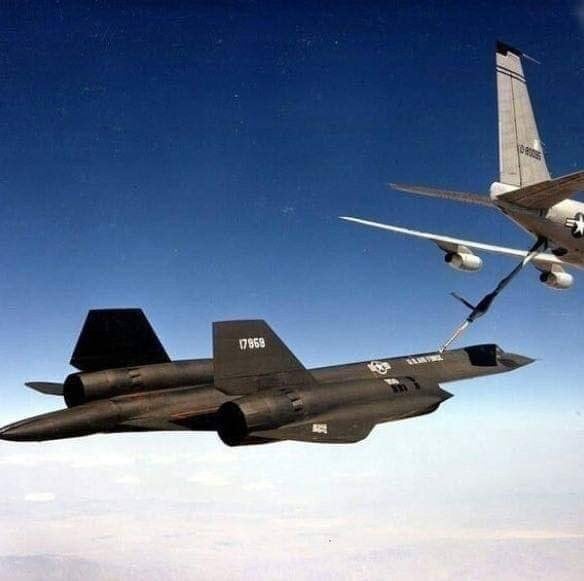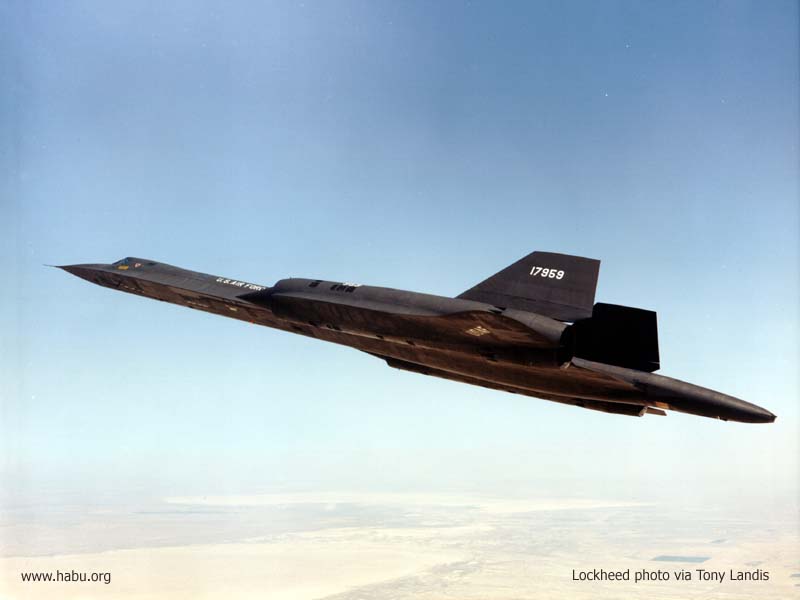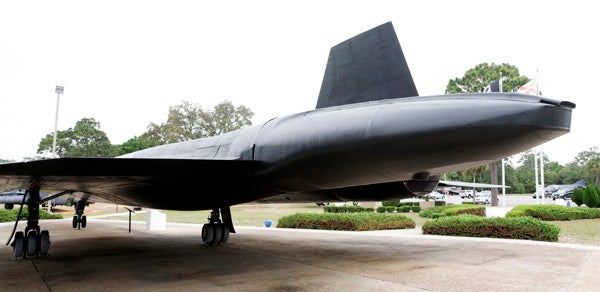 "user314" (user314)
"user314" (user314)
08/13/2020 at 11:00 • Filed to: flightline, Planelopnik, planelopnik history, SR-71, Speed check
 4
4
 2
2
 "user314" (user314)
"user314" (user314)
08/13/2020 at 11:00 • Filed to: flightline, Planelopnik, planelopnik history, SR-71, Speed check |  4 4
|  2 2 |

SR-71 61-7959 displaying the modification that provided its nickname: Big Tail
Groom Lake, 1975
In 1959, the USAF approached Lockheed to procure a version of the A-12 for its own. The Skunk Works provided a modified version, based on the YF-12 interceptor prototype, which included provisions for two crew members. In 1962, the same year as the A-12s first flight, Lockheed displayed a mockup for USAF brass, and that December, a contract was signed for 6 aircraft.
A minor diversion for some nomenclature discussions. North American Aviation, trying to keep the XB-70 Valkyrie program alive, put forward a plan to reclassify the aircraft as a reconnaissance/strike platform, with the designation changed to RS-70. Lockheed’s new bird, as it was based on the YF-12, also provisionally had a strike capability (launching nuclear ground attack versions of the AIM-47), and as the next such aircraft to enter the inventory prior to establishment of the !!!error: Indecipherable SUB-paragraph formatting!!! , it was called the RS-71. By 1964 the strike mission was removed, and Air Force Chief of Staff Curtis LeMay, who was never a fan of “RS” in the first place, lobbied LBJ to have the mission, and thus the designation, shifted to Strategic Reconnaissance. The President agreed, but after the press were given copies of his speech announcing the ‘RS-71'. This seeming ‘mix-up’ gave birth to a long-standing urban legend that the president had mixed up the letters, and that the USAF changed the name since the president can’t be wrong.

61-7959 gasses up from a KC-135Q
In October 1964 the first SR-71 was delivered and in December the flight test program, now moved to Palmdale, had begun. In the autumn of 1967, a fly-off, code-named NICE GIRL, was held between the A-12 and SR-71. Both aircraft flew routes along the Mississippi river one hour apart, allowing the USAF to determine which was the better platform. The A-12 was lighter, and therefore could fly two thousand to five thousand feet higher, and slightly faster, while the SR-71 could carry more fuel. The A-12 could carry higher resolution cameras, but the SR could do photo and signals recon at the same time. The USAF decided to retain the SR-71s, and the A-12s were placed in storage. In 1968, the first Blackbirds arrived in Kadena AB to replace the A-12, and two weeks later began missions over Vietnam.
In 1975, SR-71 61-7959 was selected to undergo modification to add an optical bar camera and ESM/ECM equipment into a nine-foot extension to the tail. This boom could articulate up for landing and take-offs, then down for flight, and had the fuel dump integrated into the upper side. Testing showed that the extension didn’t adversely affect the performance or handling of -959, nicknamed “Big Tail”, but also that the ECM didn’t appreciably improve protection either. As such, plans to fit the rest of the fleet with ‘big tails’ was canceled.

61-7959 was retired with the rest of the Blackbirds in 1989, and is now on display
at the USAF Armament Museum at Eglin AFB.

 Darkbrador
> user314
Darkbrador
> user314
08/13/2020 at 11:31 |
|
I start to see a fixation on the A12/SR71 and derivatives in your daily column. Too easy.
Your next assignment is to write a similarly interesting and well documented column about the humble but amazing Piper PA-28 (derivatives allowed).
Get on it !

 user314
> Darkbrador
user314
> Darkbrador
08/13/2020 at 11:41 |
|

.
.
.
.
.
.
.
.
.
But seriously, I had originally started this as a random exercise , just looking up “Flight Line” on GIS and seeing what grabbed me, but then I got onto a theme this week.
There’s one more day of Blackbirds, then a few days of another theme next week; after that we’ll see. Have to find a pic that cat ches my interest.